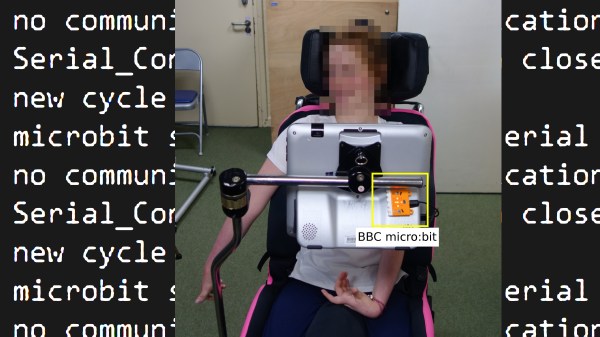Social cues are tricky, but humans are very good at detecting where someone is looking; that goes a long way toward figuring out where someone is placing their attention. All of this goes right out the window though, when you’re talking with somebody who uses eye-tracking software to speak. [Matthew Oppenheim] with Lancaster University, UK wants to give listeners the message of Give Me a Minute with an easy-to-recognize indicator. His choice is a microBit, which displays a rotating arrow on the LED array while someone composes their speech. He chose the microBit because they are readily available, and you can get cases to fit people’s personalities. After the break, you can see a demonstration, but the graphic appears scrambled because of the screen flicker. The rotating arrow is a clear indicator that someone is writing, whereas a clock might suggest a frozen computer, and a progress bar could not be accurate.
[Matthew] wrote a program for the interpreting computer which recognizes when a message is forming by monitoring the number of black pixels in the composition field. If it changes, someone must be composing a sentence. Many people will try to peek over the speaker’s shoulder and see if they are working, but we’re sure that most readers would join the users of such tech in being unhappy if someone blatantly looks at theirr computer screen while they are typing.
Wheelchairs don’t always have to come from a hospital or supply store, and they don’t have to stay on the ground.













